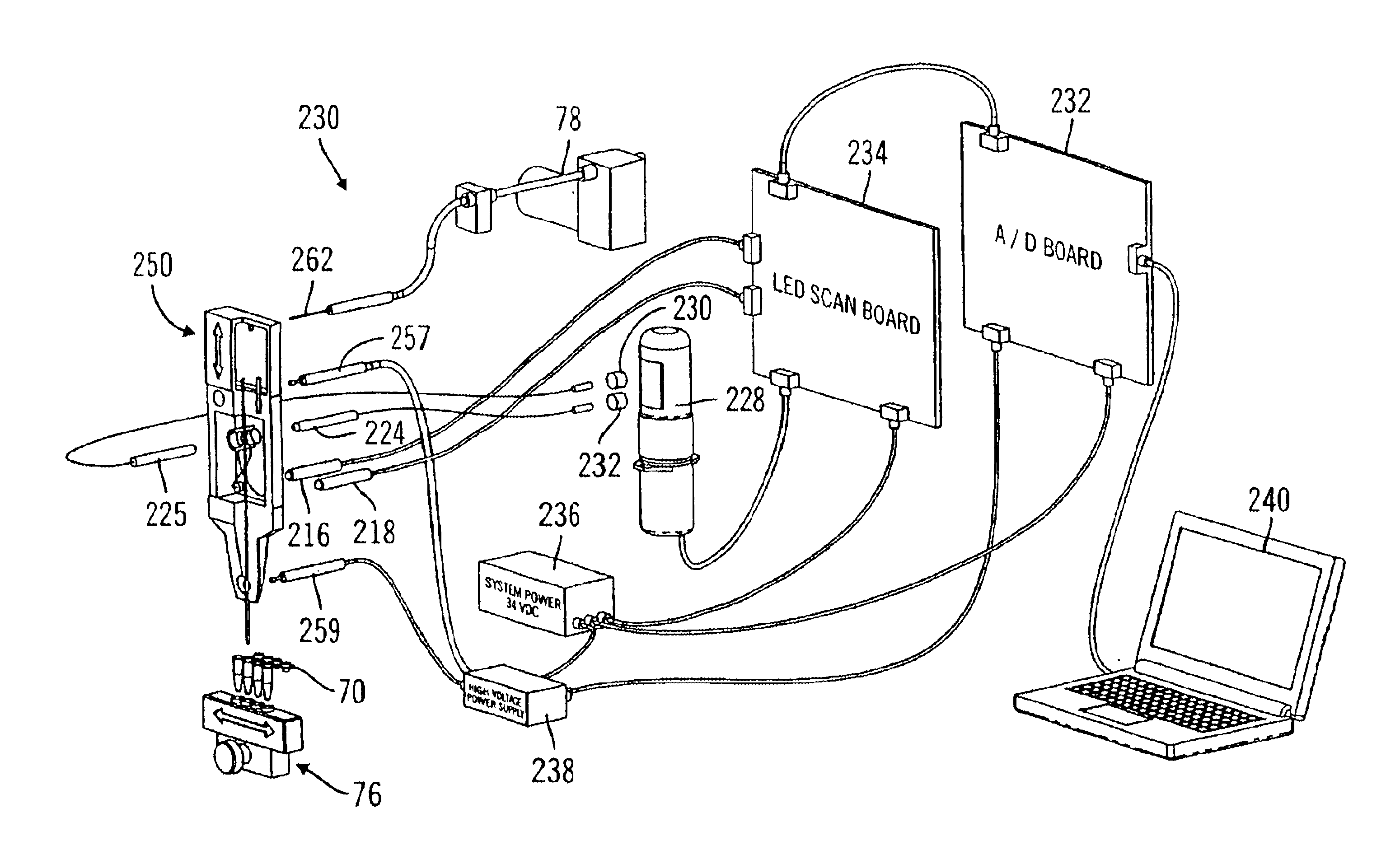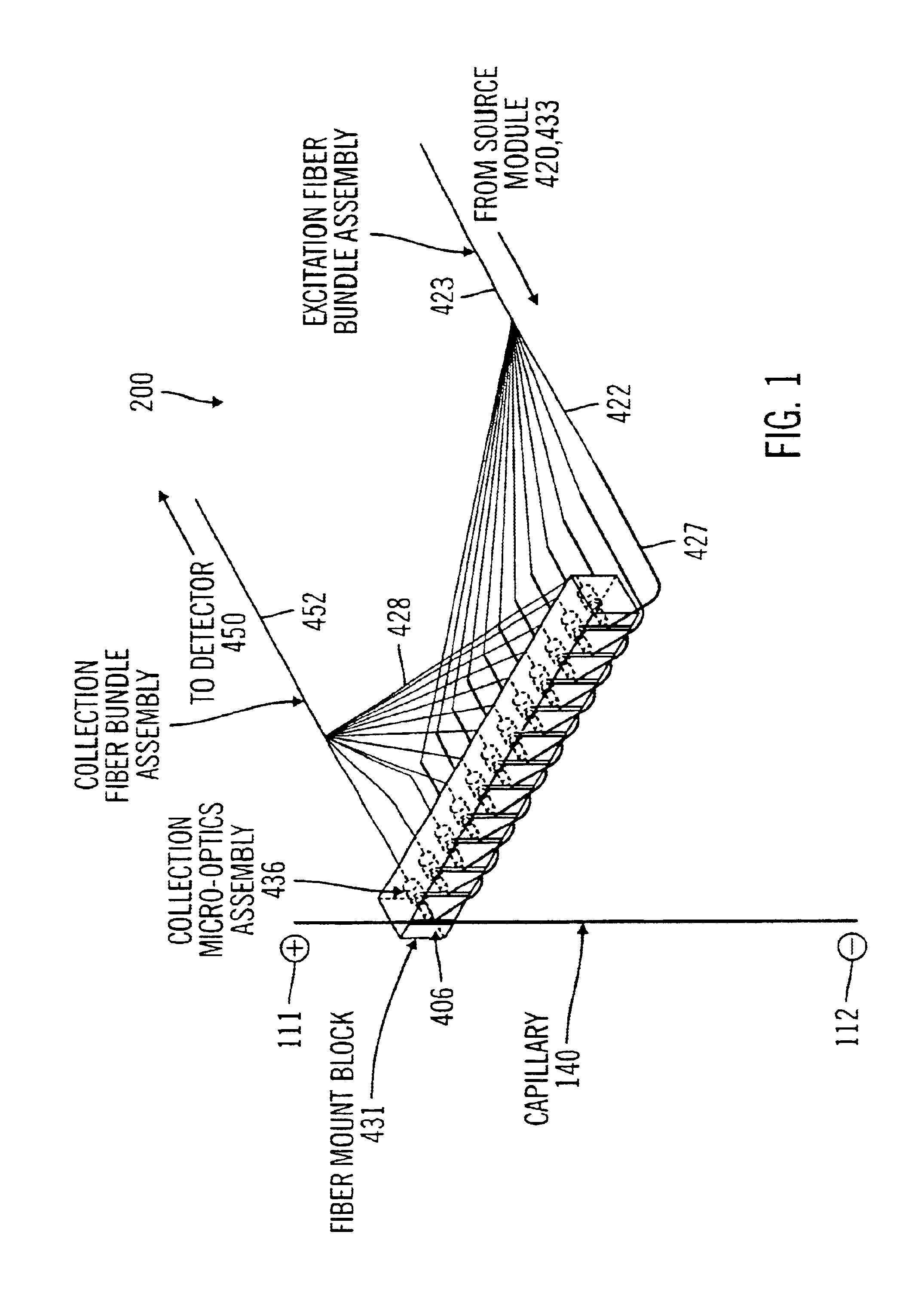Multi-color multiplexed analysis in a bio-separation system
a bioseparation system and multi-color technology, applied in the direction of optical radiation measurement, electrodialysis, spectral modifiers, etc., can solve the problems of high cost, high cost, and high cost of existing dna analysis procedures, and achieve high throughput, low cost, and high sensitive
- Summary
- Abstract
- Description
- Claims
- Application Information
AI Technical Summary
Benefits of technology
Problems solved by technology
Method used
Image
Examples
Embodiment Construction
e present invention.
[0027]FIG. 4 is a block diagram of the control system for the incident radiation and emission detection system.
[0028]FIG. 5 is a timing diagram illustrating the pulsing for time-multiplexing of radiation sources in accordance with one embodiment of the present invention.
[0029]FIG. 6 is a schematic view of optical detection configuration applying a two-color excitation scheme in accordance with one embodiment of the present invention.
[0030]FIG. 7 is a simplified view of a bio-separation system, which incorporates the two-color incident radiation optical detection configuration of the present invention in relation to a single channel capillary cartridge, in accordance with one embodiment of the present invention.
[0031]FIG. 8 is an enlarged view of the capillary cartridge and the optical detection elements.
[0032]FIG. 9 is a schematic view of optical detection configuration applying a four-color incident radiation scheme in accordance with one embodiment of the prese...
PUM
| Property | Measurement | Unit |
|---|---|---|
| internal diameter | aaaaa | aaaaa |
| wavelength | aaaaa | aaaaa |
| wavelength | aaaaa | aaaaa |
Abstract
Description
Claims
Application Information
 Login to View More
Login to View More - R&D
- Intellectual Property
- Life Sciences
- Materials
- Tech Scout
- Unparalleled Data Quality
- Higher Quality Content
- 60% Fewer Hallucinations
Browse by: Latest US Patents, China's latest patents, Technical Efficacy Thesaurus, Application Domain, Technology Topic, Popular Technical Reports.
© 2025 PatSnap. All rights reserved.Legal|Privacy policy|Modern Slavery Act Transparency Statement|Sitemap|About US| Contact US: help@patsnap.com



